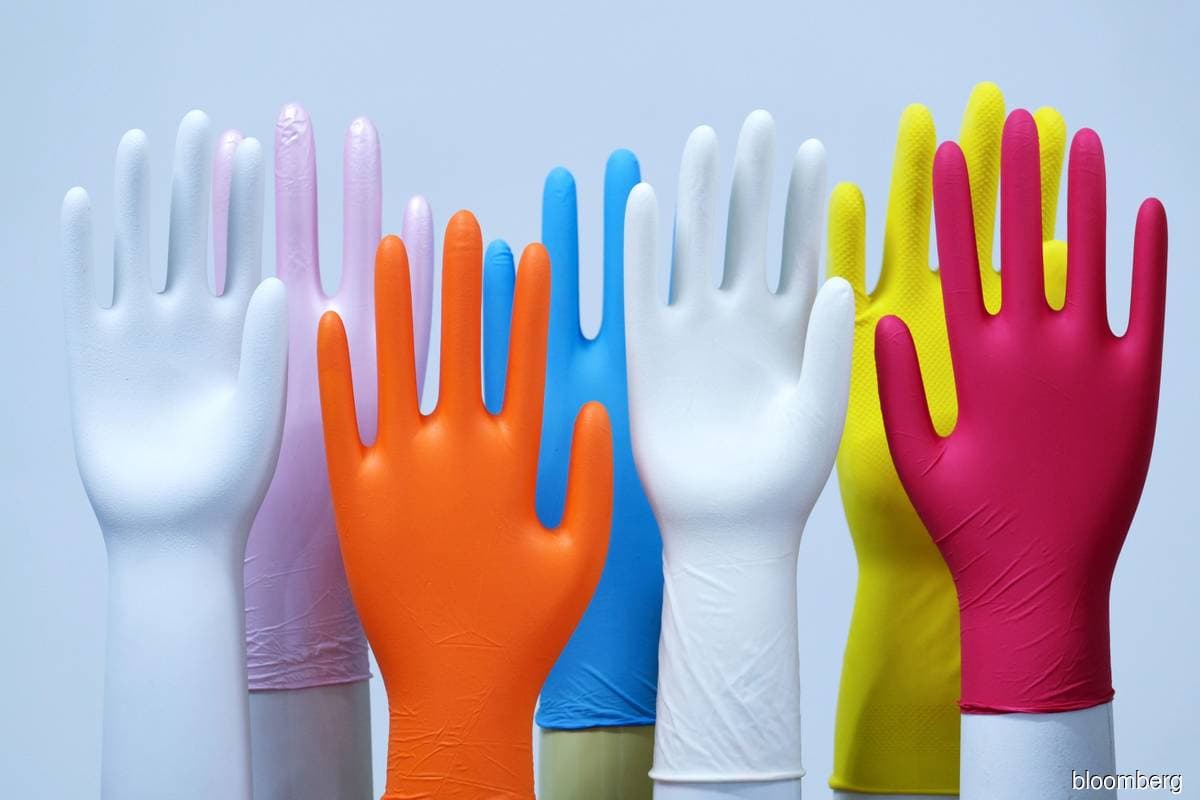
KUALA LUMPUR (Dec 13): AmInvestment Bank Bhd expects glove makers to slip into or widen losses, especially for the fourth quarter ending Dec 31, 2022 (4Q2022) and 1Q2023, mainly due to further declines in average selling prices (ASPs) in December, following relative price stabilisation over the past three months.
This was based on the research house’s channel checks with glove makers under its coverage recently, namely Top Glove Corp Bhd, Hartalega Holdings Bhd and Kossan Rubber Industries Bhd.
AmInvestment said the situation is also expected to be worsened by elevated operating expenditure, especially natural gas and lower economies of scale, as a result of sub-optimal plant utilisation rates.
“Nevertheless, we believe some price improvements could start in 2Q2023, driven by the customer replenishment cycle,” the research firm said in a note on Tuesday (Dec 13).
Given the lower ASP expectations, AmBank trimmed the fair value (FV) for Hartalega to RM1.59 (from RM1.87), and reduced Kossan’s FV to RM1 (from RM1.19), while maintaining an FV of 60 sen for Top Glove. The firm also maintained its “neutral” call on the glove sector, with a "sell" call on Top Glove, and “hold” calls on Hartalega and Kossan, given the continuing supply-demand imbalance seen for the next two quarters.
According to AmInvestment, Hartalega guided that normal nitrile rubber medical glove ASPs stabilised at US$20 (RM88.72) per 1,000 pieces for the three consecutive months between September and November this year, based from the glove maker’s results briefing on Nov 22.
The firm gathered that the latest ASP in December based on its recent checks had dropped to the range of US$17 to US$19 per 1,000 pieces, primarily because glove makers want to maintain their utilisation rates, as customers compare prices against Chinese glove makers, who were quoting in the range of US$14 to US$15 per 1,000 pieces.
“Despite Malaysia’s medical rubber glove quality being superior to China’s, an 18% to 21% discount is attractive enough for end customers to source from China, especially European customers who are less concerned about geopolitical risks, such as the US-China trade war.
“We believe that continued declines in ASP and utilisation rates pose heightened risks that the inventory replenishment cycle could materialise later than 2Q2023,” it said.
Strengthening ringgit a bane for glove makers
AmInvestment said the ringgit had strengthened against the US dollar by 7% to 8% since early November this year, which will be detrimental to export-oriented glove makers, as more than 90% of their revenue is denominated in US dollars. However, the impact on glove makers varies according to the magnitude of hedging arrangements.
Based on the firm’s estimates, for every 10% strengthening of the ringgit against the US dollar, the impact on financial year 2023 core earnings will be 0.5% to 1.0% for Hartalega, 1.3% to 1.5% for Kossan, and 11% to 13% for Top Glove, with the minimal impact on Hartalega and Kossan mainly due to the two glove makers having hedged most of their foreign exposures, while Top Glove did not.
Stocks
From the demand perspective, AmInvestment gathered from the three glove makers under its coverage that end customers’ rubber glove stock level is depleting, albeit sitting at a high three to four months of inventories until end-1Q2023, leading to waning purchase orders in 4Q2022 and 1Q2023.
On a positive note, the firm said the three glove makers guided that customers may start restocking from 2Q2023, and as such believes improvements could only be seen earliest in 2Q2023.
This is a result of weak demand, whereby the industry's plant utilisation rate was running at 30% to 50% in 3Q2022, versus an optimal rate of 80% to 85%, with the firms believing low utilisation will continue until 1Q2023, besides resulting in higher operating expenses due to lower economies of scale.
“We anticipate a 15% decline in glove demand in 2022, based on annualised global glove demand in the first eight months of the year and the combined first-nine-months sales for the three glove makers under our coverage, which fell 12% year-on-year (y-o-y).
“Comparatively, the Malaysian Rubber Glove Manufacturers Association (Margma) forecast a growth rate of 10% to 12% y-o-y, which we believe is overly optimistic,” it said.
Glove makers continue heading towards losses on overcapacity amid rising costs
AmInvestment noted that continued intense competition among regional glove makers stemming from overcapacity and low demand had led to a downward ASP spiral from its peak in 2Q2021.
Furthermore, the firm said rising operating costs, such as energy and labour costs, had driven the world's largest glove maker, Top Glove, into its maiden loss since listing in the fourth financial quarter ended Aug 31, 2022.
“We expect Hartalega and Kossan to slip into losses in the coming two quarters, that is 4Q2022 and 1Q2023, whereas Top Glove will widen its losses in the coming two quarters, before improvements could earliest be seen from 2Q2023,” it said.
Meanwhile, AmInvestment said glove makers had unanimously announced a scale-back of capacity expansion over the coming months, and the combined effort could relieve some supply-side pressure in the glove industry.
The firm said Hartalega guided that the first line of its Next Generation Integrated Glove Manufacturing Complex 1.5, with total annual capacity of 19 billion pieces, will be delayed from the original commissioning date in October this year, with the glove maker working to decommission some inefficient lines to cut costs.
Similarly, Top Glove revised downwards its original ambitious expansion plan of achieving total annual capacity of 204 billion pieces to 115 billion pieces in December 2025, whereas Kossan guided the deferral of near-term capacity expansion plans in adapting to market conditions and curtailing excess supply.